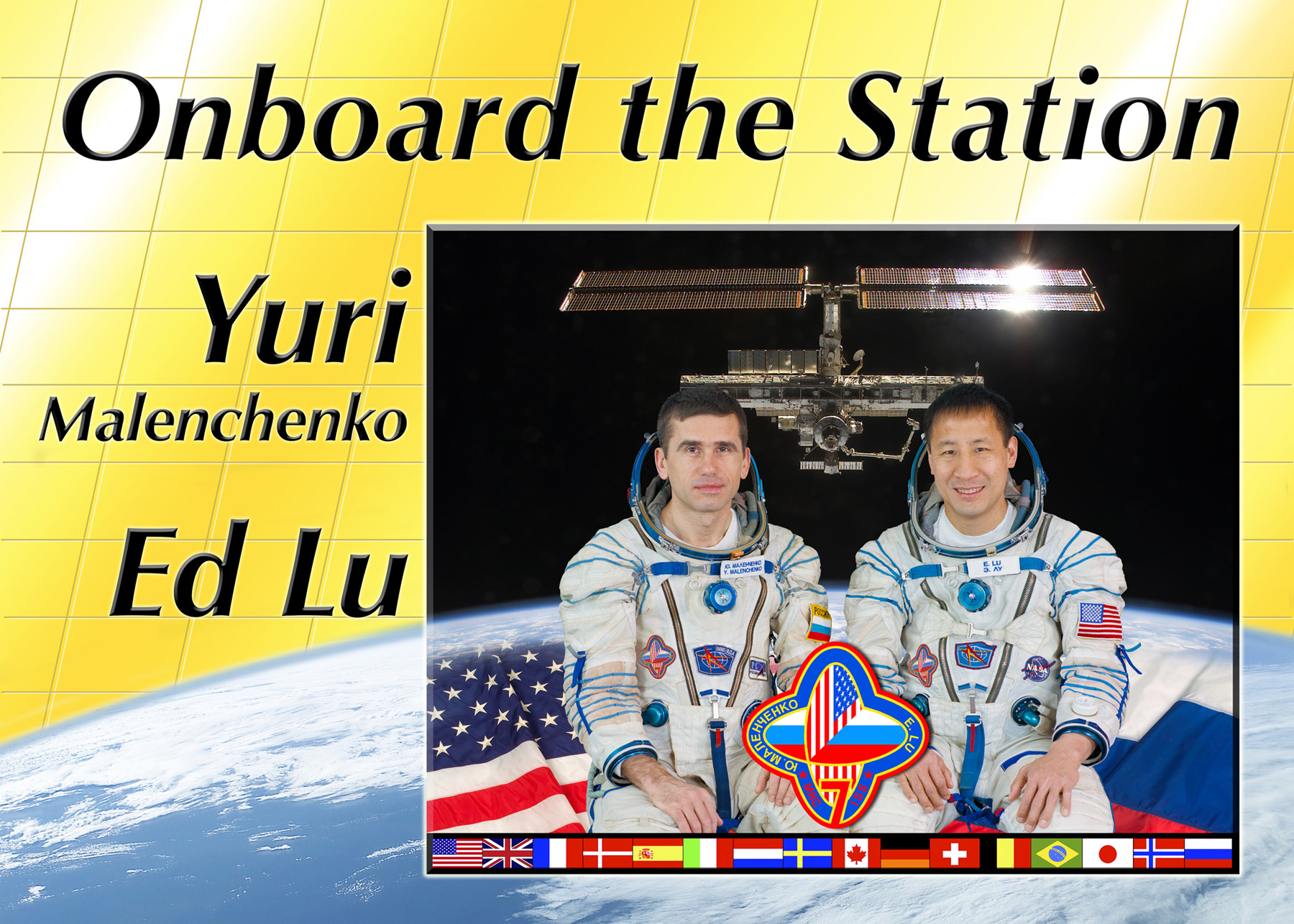Expedition 7 on:
[Wikipedia]
[Google]
[Amazon]
Expedition 7 was the seventh expedition to the

ISS Expedition 7 Crew
site from Nasa.
{{ISS expeditions Expedition 07 2003 in spaceflight
International Space Station
The International Space Station (ISS) is a large space station that was Assembly of the International Space Station, assembled and is maintained in low Earth orbit by a collaboration of five space agencies and their contractors: NASA (United ...
.
Crew

Planned crew before ''Columbia'' disaster
Mission parameters
*Perigee
An apsis (; ) is the farthest or nearest point in the orbit of a planetary body about its primary body. The line of apsides (also called apse line, or major axis of the orbit) is the line connecting the two extreme values.
Apsides perta ...
: 384 km
*Apogee
An apsis (; ) is the farthest or nearest point in the orbit of a planetary body about its primary body. The line of apsides (also called apse line, or major axis of the orbit) is the line connecting the two extreme values.
Apsides perta ...
: 396 km
*Inclination
Orbital inclination measures the tilt of an object's orbit around a celestial body. It is expressed as the angle between a reference plane and the orbital plane or axis of direction of the orbiting object.
For a satellite orbiting the Eart ...
: 51.6°
* Period: 92 min
Mission objectives
The seventh crew of the International Space Station lifted off inSoyuz TMA-2
Soyuz TMA-2 was a Soyuz spacecraft, Soyuz (Russian Союз ТМА-2, ''Union TMA-2'') mission to the International Space Station (ISS) launched by a Soyuz FG launch vehicle. The spacecraft docked with the ISS on April 28, 2003 and undocked on ...
from the Russian Space Agency's Baikonur Cosmodrome in Kazakhstan on 25 April 2003, at 05:56:20 UTC. The Soyuz docked on 28 April 2003 and took over command of the ISS. The ''Space Shuttle
The Space Shuttle is a retired, partially reusable launch system, reusable low Earth orbital spacecraft system operated from 1981 to 2011 by the U.S. National Aeronautics and Space Administration (NASA) as part of the Space Shuttle program. ...
'' fleet had been grounded due to the ''Columbia'' disaster, so the crew size was reduced to two, as opposed to the three that could be carried by the shuttle. The Expedition Seven crew—along with European Space Agency
The European Space Agency (ESA) is a 23-member International organization, international organization devoted to space exploration. With its headquarters in Paris and a staff of around 2,547 people globally as of 2023, ESA was founded in 1975 ...
Astronaut Pedro Duque
Pedro Francisco Duque Duque, Order of Friendship, OF, Medal "For Merit in Space Exploration", OMSE (born Madrid, 14 March 1963) is a Spanish astronaut and aeronautics engineer who served as Ministry of Science (Spain), minister of Science from ...
—landed back on Earth on 27 October 2003 at Kazakhstan at 02:41:20 UTC, after undocking from the International Space Station in their Soyuz spacecraft at 23:17 UTC.
Due to the reduced crew size, the scientific work had to be scaled down as well. Only 15 different experiments were conducted during the mission. Malenchenko and Lu were also tasked with periodic maintenance work on the station, as well as spacewalk training (although no spacewalks were planned). Supplies were delivered by '' Progress M1-10'' in June and '' Progress M-48'' in August.
From Houston, ISS Spacecraft Communicator Mike Fossum informed Expedition 7 Commander Yuri Malenchenko and Science Officer Edward Lu on 15 October 2003 of the successful launch of the Long March rocket carrying the Shenzhou 5
Shenzhou 5 (, see ) was the first human spaceflight mission of the Chinese space program, launched on 15 October 2003. The Shenzhou (spacecraft), Shenzhou spacecraft was launched on a Long March 2F launch vehicle. There had been four previous fl ...
spacecraft and Chinese astronaut
An astronaut (from the Ancient Greek (), meaning 'star', and (), meaning 'sailor') is a person trained, equipped, and deployed by a List of human spaceflight programs, human spaceflight program to serve as a commander or crew member of a spa ...
Yang Liwei
Yang Liwei (; born 21 June 1965) is a Chinese major general, former military pilot, and former taikonaut of the People's Liberation Army.
In October 2003, Yang became the first person sent into space by the Chinese space program. This missi ...
. "It's really some exciting news to share. The world's spacefaring nations have been joined by a new member tonight: China."
"First off, we want to congratulate them," Lu replied. "The more people that go into space, the better off we all are. This is a great achievement and good for everyone in the long run." In Chinese, he later added, "Welcome to space. Have a safe journey."
"I would also like to say I love to have somebody else in space instead of me and Ed," said Malenchenko. "I also know this is great for thousands and thousands of people from China. I congratulate all of them."
Malenchenko and Lu were previously crewmates on the STS-106 shuttle mission and did a spacewalk together during that flight.
References
External links
ISS Expedition 7 Crew
site from Nasa.
{{ISS expeditions Expedition 07 2003 in spaceflight